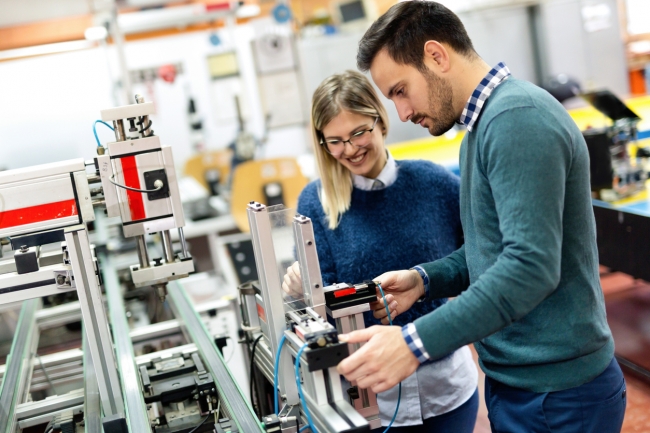3 minute read • published in partnership with ABGI
Insight: The results of innovation in manufacturing – part 1
At a time when businesses across the UK are grappling with unprecedented challenges, access to funding to increase cashflow and help mitigate the disruption has become a top priority. There is no doubt that British companies which have been involved in R&D and those which turn out to be hugely successful are linked. In this series of articles, we share with you case studies and practical examples of manufacturing businesses that were able to claim funding on projects aimed at improving products for market by making them cheaper, faster, smaller, larger or more efficient. In the first of a series of articles, ABGI looks at everyday manufacturing activities that could help boost business growth.
Part 1 – Making Things Smaller
For a number of years now the pressure has been on consumer goods manufacturers to continually reduce the size of finished goods: just look at how small your latest mobile phone is compared with your first “Nokia brick”…
The constant demand for products with increased functionality AND decreased size and weight, generates its own pressures and challenges for the designers and engineers charged with the arduous task of “making things fit on a pinhead”!
This might sound like a simple enough task, but in reality, it creates a number of uncertainties requiring serious effort to resolve. To many of the engineers involved, these challenges are simply part of their daily “problem-solving routine”. However, to the rest of us, they are a testimony to the power of innovation, and the result of some significant research and development work.

ABGI is encouraging manufacturers to look at everyday activities that could help boost business growth / Picture: Getty/iStock
Big challenges for miniature results
At its most basic level, there is the tricky challenge of designing the components themselves and configuring layouts to reduce the space occupied, whilst maintaining performance and functionality. The redesign and miniaturisation of components can create a demand for new manufacturing techniques and the use of new materials, involving computer-based modelling and/or iterative prototyping.
In some instances, it can require the integration of components: e.g. developing one component which may perform the functions of a number of obsolete components.
Increasing the concentration of electronic componentry in a confined area can generate a build-up in heat and electromagnetic fields leading to overheating or electromagnetic interference, both of which could have disastrous results on the performance and life expectancy of products.
The challenge for designers and engineers is finding out how to develop layouts to aid cooling, by freeing up airflow and dissipating heat, whilst at the same time creating a modular design to disrupt and obstruct the EM fields being created in working components. These days this process is eased by the use of computer-aided design, which allows engineers to model airflows and predict the impact of shields on EM forces, reducing (but not negating) the need for prototyping and testing.
Another facet of resolving the issue of heat build-up and EM interference would be experimenting with new materials, to carry heat away from the core of a component toward the surface or to act as a partial barrier reducing the impact of EM forces. The experimentation with, and appropriation of, new materials in advancing circuitry or enhancing the structural integrity of thinner enclosure walls.
The “cherry on the cake” of R&D
The rewarding thing is that all of the above work undertaken to deliver smaller, more compact products is likely to be eligible for R&D tax relief and could net the companies behind our incredible shrinking devices significant funding to inject back into their companies and accelerate future innovation and business growth.
Talk to ABGI if you would like to learn more about how you could leverage funds back into your business by claiming R&D tax relief on your product development projects.
